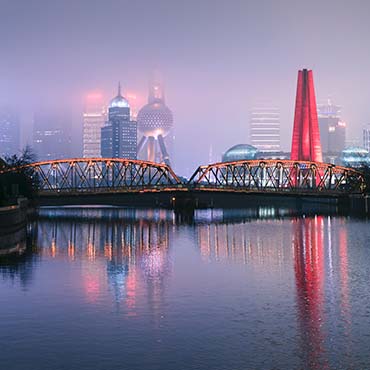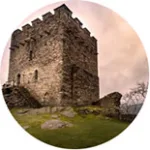Yu Garden and Yu Garden Bazaar are worthy inclusions on any Shanghai day tour or visit to this fabulous city.
With an intriguing back story, it seems this is a fitting place to start as we delve into why you should make this a must-see sight during your Shanghai explorations.
Yu Yuan Garden: A son’s gift to his father

Yu Garden is a gorgeous landscaped garden created in the style of traditional Chinese gardens. Built in 1559 during the Ming dynasty and covering an area of over two hectares (the original area was almost 5 hectares), it was created as a gift that was lovingly commissioned by a son for his father. The owner, Pan Yunduan, built the garden on his own land near his property for his father who had retired from his high-ranking official position.
Richly steeped in symbolism, from the design to construction, the moment you step through the entrance, you will appreciate the significance of its name. In Chinese, Yu 豫 means “peaceful and comfortable”, and Yu Garden is certainly that. Pan Yunduan (the original owner) wanted to bring his father ease and happiness through the garden, and named it accordingly: Yu Yuan, which translates as Yu Garden.
At the time of its construction, the Pan family was one of the most distinguished in Shanghai. Pan Yunduan commissioned the era’s most famous landscape gardener for the project. Such was the detail and importance of the garden that it took over 20 years to complete. Not surprisingly, it was – and still is – considered to be among the most famous in Southeast China.
Yu Garden: A backdrop to change in China

As you make your way around the garden, you’ll very quickly understand that keeping something of this size and detail in pristine condition is no small undertaking. When the fortunes of the Pan family meant they could no longer afford to maintain it, the garden’s condition and appearance deteriorated. At the end of the Ming dynasty, the husband of Pan Yunduan’s granddaughter inherited the garden and during the Qing dynasty, local dignitaries converted the garden into the Qing He Academy. The venture was a failure and by 1709, ‘Ling Park’ was built on a site of some 1,300 square meters, which was purchased by local businessmen and made available to the public. In 1769, funds were gathered, again by wealthy local businessmen, this time to purchase Yu Garden. Over the next 20 years, the funds were spent rebuilding the garden from the ground up.
It seems the garden wasn’t to enjoy tranquility for long. During the 19th century came more change. The British army occupied Huxinting, the teahouse in the middle of the lake, using it as their command office during the First Opium War. The Small Swords Society established their headquarters here during the Taiping Rebellion, fighting the Qing government army in the garden. Commencing in 1956, it took five years to repair the garden, and it was finally opened to the public in 1961.
Here’s what you’ll find at Yu Garden

Wandering through Yu Garden, you’ll gain an appreciation of traditional Chinese architecture, particularly how nature and man-made structures integrate seamlessly to complement one another. In the various structures and buildings serving a range of purposes, it’s possible to see how artisanal skills, such as brick and stone carving, clay sculpture, and woodcutting, have been showcased.
Divided into four sections (west, east, middle, and inner), the most popular areas to visit are:
- Sansui Hall – Built during Qing dynasty reconstruction
- Grand Rockery – Standing at 14 meters high, and constructed with over a thousand tons of yellowstone, this was created by the original Yu Garden designer
- Yu Ling Long – The exquisite Jade Rock, considered Yu Garden’s highlight, is a rare rock from Taihu Lake. It weighs approximately three tons and is 3 meters high. Water poured over the top emerges through the many holes, creating waterfalls. It was also used for incense, which was placed at the bottom and lit, causing the smoke to flow out through the holes.
- Big Stage – A beautifully decorated 7 meter square stage used for performances was built towards the end of the 19th century.
- Cultural relics – Throughout the grounds you will come across various cultural relics, including a golden bowl from the Tang dynasty, calligraphy and paintings by famous artists, and ancient furniture collections.
It is a wonderful garden ‘museum’, offering much to the traveler interested in Shanghai’s fascinating history.
Yu Garden Bazaar: Close to Yu Garden

As well known and perhaps no less popular, Yu Garden Bazaar is within walking distance of Yu Garden. Now a busy shopping precinct for locals and tourists, the bazaar grew gradually after Yu Garden was opened to the public in 1961. It offers an eclectic cross-section of goods, from souvenirs, antiques, crafts, fresh produce, and food. Making a stop here is a must if you fancy sampling the famous Shanghai steamed dumplings from a 120 year old restaurant, or Shanghai pan-fried dumplings from a 90 year old restaurant. Green Wave Gallery restaurant is an icon of the Shanghai dining scene. Established in the 16th century during the Ming dynasty, the Shanghai cuisine served here has been sought after by dignitaries and royalty alike, including Queen Elizabeth II, who visited in 1956.
When should I visit?

It can be easy and difficult to decide the best time to visit.
Yu Garden is evergreen, with over 670 trees and shrubs, including one gingko tree that’s over 430 years old. The seasons can be followed by the blossoming trees: Plums in winter, lotuses in summer, the osmanthus and chrysanthemums in autumn, and the remainder of all others in the spring.
Keep in mind that a special time of year is during Chinese New Year’s Lantern Festival, when the entire area is decorated by traditional red silk lanterns, which each tell the story of a famous Chinese legend or tale, or riddles that can be guessed to win a prize.
Regardless of when you visit, there’s no doubt a beautiful scene will greet you.
Want to include Yu Garden and Yu Garden Bazaar on your Shanghai day tour itinerary? You can do that with ease through ChinaTours.com. Make the most of every minute of your vacation and enjoy a fully guided experience, allowing you to relax and learn all there is to know about fascinating sights in Shanghai and beyond. Reach out to our travel team with your questions. We are here to help.
| Entry Prices | |
|---|---|
| Adults | ¥40 (1 April – 30 Jun, 1 Sep – 30 Nov) ¥30 (1 Jul – 31 Aug, 1 Dec – 31 Mar) |
| Children (6-18 years old) | half price |
| Children (Under 6 years old and under 130cm) | free |
| Food | Yes | There are many restaurants in the precinct around the Yu Garden and Yu Garden Bazaar. |
| Transport | Yes | Bus, subway and taxi |
| Tours | Yes | |
| Family friendly | Yes | |
| Close to city | Yes | |
| Opening hours | Tuesday – Sunday (Closed Monday) 9.00am – 4.30pm |




 Please Use China Tours, They Deserve It!
Please Use China Tours, They Deserve It!





